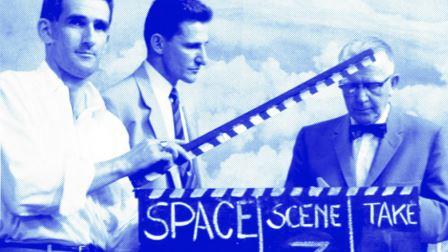Use This Theater Technique To Improve Your Next Meeting
The IT guy thinks you don’t like him. The marketing director complains that the sales director doesn’t return her emails. Someone anonymously posts a snide note in the office kitchen about fridge etiquette.
Nobody likes workplace drama. It kills morale, divides the team, and ultimately drains time and profits. As many a manager knows too well, trying to brush it away or ignore it seldom works. And as many a theater director knows, drama—interpersonal tensions, frustrations, ill will—can be harnessed and channeled into more productive uses. Here’s how to do it, starting with your next meeting.
What’s Behind The Drama
Indeed, the desire to act out stories, improvise, and play characters and imitate others is as old as humanity itself—look no further than ancient Greece. Actually, look no further than your own childhood. For kids everywhere, play is improvisational, creative, and fundamentally performative. But for the most part, we stop playing when we grow up.
It’s our loss. Scholarly research and the popular press extol the benefits of play—for creativity, communication, team building, and simple stress relief, among other reasons.
Over the past couple of decades, business schools, leaders, and teams have begun tapping back into the power of performance in the workplace. It may sound juvenile or even like a distraction from “real” work, but the truth is that we can create positive drama to help counteract the negative kind that tends to build up in most work cultures.
We can free people to make new and better choices in how they work and interact. After all, companies are already used to reviewing their employees’ “performance.” So why not actually direct it?
Try This At Your Next Team Meeting
Are your meetings contentious, disagreement-filled, or derailed by personality conflicts? Or are they lacking in drama—boring, tedious, and not nearly as productive as they could be considering how long they run?
In either case, here’s a way to use drama to turn that meeting around and make it great (and yes, it will feel weird at first—most creativity in the workplace does at first): Tell your team that instead of just having the meeting you want to hold a performance of it. Start small—it’s just an experiment—with a quick, 15-minute meeting “scene,” with half the team “onstage” and half as an audience.
Then switch, and have the audience perform their own meeting scene. At first, you may not notice a huge difference—but that’s okay. These performances will look and sound a lot like your ordinary meetings, but with a few differences:
1. There’s a director. In a performance, the director (that’s you, by the way) runs the meeting like it’s a show or rehearsal for a show. It’s your job to call “action!,” “cut,” “take two,” and so on. When you encounter the usual array of personalities and communication styles—the talker who hijacks the meeting with lengthy digressions, the silent one who only speaks when spoken to, the “smartest person in the room,” the one who’s overly amenable to everything, the bureaucrat who enforces all the rules, the perpetually confused one, the time-sucking philosopher—you can do much more than simply be annoyed, frustrated, or complacent. Because it’s a performance, these are now “characters,” and as such you can direct their performances.
2. The performance is visible. The immediate effect of performing a meeting is that everyone becomes aware of their performance. The meeting is no longer simply happening, and team members aren’t just passively in it. Now they’re both in it and can see how it’s going, what you’re doing, and what others are doing. The experience takes on a kind of “meta” dimension that doesn’t do away with the usual drama, tensions, and irritations, but makes them simultaneously more apparent and less threatening.
3. The performance is changeable. And now, with the awareness that this is a performance, we can make different choices about how to perform. That includes not just what you’re saying, it’s how you’re saying it, how it’s being heard, and how others are responding as a result. You, as the director, can now help people try different performance choices in their character, their actions, and their dialogue.
4. It’s team-building, too. You’re not just improving the results of this meeting. This kind of play and performance is a great exercise for tapping into all the developmental benefits that tend to get lost in the usual workday—when we simply deal with drama but don’t channel it productively. In other words, when we forget how to play.
Get Out Of The Director’s Chair
Once the team has gotten the hang of this and you’ve performed/directed your way through a full meeting or two, mix it up a bit. Have each person take on the role or character that someone else has been playing.
That could simply mean swapping characters—the silent one plays the naysayer, and vice versa. Or it could be playing a character that you want in the meeting—like somebody who always supports other people’s ideas, or who’s genuinely curious and asks helpful questions.
Making your staff meeting (and other conversations at work) a performance can help defuse workplace drama and teach you and your colleagues to take a break from your usual, unacknowledged “characters” and “scripts.” It builds our awareness of our working selves as performers, of the team as a performing ensemble, and of the fact that we’re always performing to one degree or another, wherever we go.
Best of all, this simple technique can free us to create new performances—new versions of ourselves—anytime we want. That level of versatility, agility, and adaptability is something any manager would be grateful for, and it can’t be faked. It can, however, be performed.
Cathy Salit is CEO of Performance of a Lifetime, and the author of the recently published Performance Breakthrough: A Radical Approach to Success at Work.
Fast Company , Read Full Story
(12)


